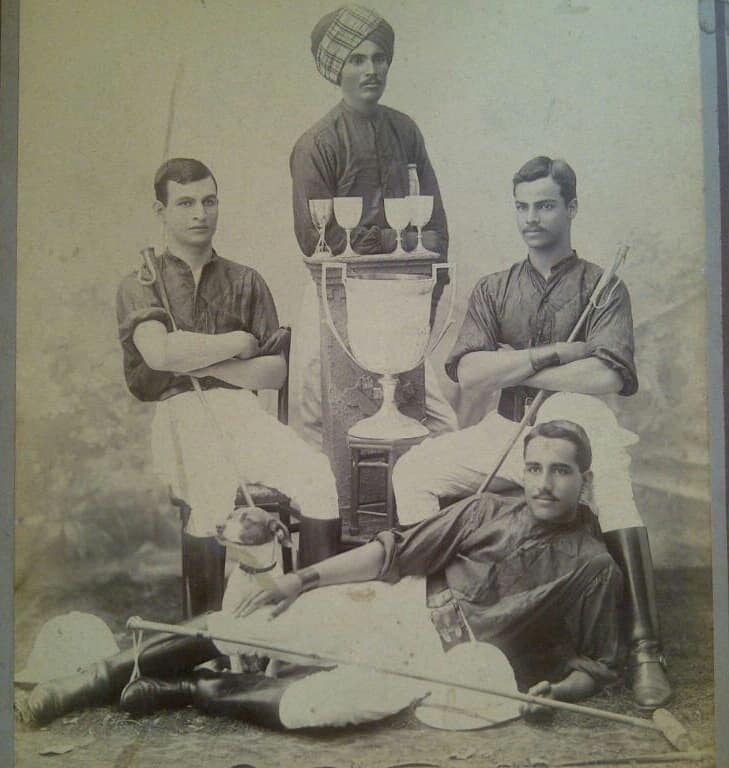The connection between humans and horses dates back to ancient times. The success or failure of an invading army often depended upon the quality of the horses that it had and the ability of the men who rode these horses. There had to be a close understanding and teamwork between the men and the animals to ensure an army’s success. So it was but natural that certain breeds of horses were highly favoured for their intelligence and bravery.
So it was but natural that many types of sports involving horses and riders evolved over a period of time. Chariot races, horse races and other competitions became popular. Mounted archery was widely practiced in Mongolia, China and Japan. Another sport that evolved in Central Asia was the ferocious Buzkashi. The early versions of the game of polo is said to have started in Persia and Central Asian regions in the ancient world.
Later the game spread to India. Among the first people to play the game were the warriors of Manipur who called it Sagol Kangjei. In Hyderabad the game became popular from 1877 onwards, thanks to the efforts of Viqar-Ul-Umrah and other noblemen. Many top class players and teams emerged from this region.
But the most noteworthy player that Hyderabad produced was Shah Mirza Baig. It is in several records of the important bodies of polo that authenticate Shah Mirza Baig’s immense talent as a polo playing genius. At a young age he reached an international handicap of 9 goals. In the annals of the Coronation Cup which was started in England in 1911 to commemorate the Coronation of King George 5th, the following line has been written about him:
“The Coronation Cup was won by the team of the Indian Polo Association. The team had three British Officers namely Captain Ritson, Cheape and Barrett and Shah Mirza Baig of Hyderabad who is said to be the greatest wizard with a polo stick that the world has ever known.”
The teams that he played for won many hard battles, tournaments and trophies. One of the most memorable performances that Shah Mirza Baig gave was in 1906 in the Indian Polo Association championship in Calcutta (now named Kolkata). His team “The Pilgrims” won the trophy with a commendable and consistent display of horsemanship and playing skills. Besides Baig, the other members of the team were the Rajkumar of Cooch Behar, Captain Campbell Ross and the famous Dhokal Singh.

According to Siraj Attari, former polo player and Steward of the Indian Polo Association, when Shah Mirza Biag was very young, he learnt the rudiments of the game from his father Abdullah Baig. It is said that the young lad used to go riding on his pony and dribble a polo ball along with him even through the crowded streets. He could keep control of the ball avoiding other vehicles such as tongas, bullock carts and also street vendors and pedestrians. After a few years, he became one of the most skilful ball jugglers that the world had ever seen.
Later he represented the formidable Golconda team belonging to the Prince of Berar. His brother Khader Baig and their cousin Ibrahim Baig (who tragically died at a young age) also played for the Golconda team along with General Khader Yar Jung. These players took the Golconda team to the top of the national polo circuit in those days according to Siraj. The team won all the tournaments in Hyderabad, Bombay, Bangalore and Madras.
Shah Mirza Baig was a great player to watch and people from far and near turned up to see his games. In 1924, he was at his peak and he could dribble the ball along the length of the field at full gallop. There was no player who had the caliber to take the ball away from him. Some players used to try and check him by riding into him but he would take the ball away to the other side and start again at full gallop. In short, he was unstoppable.
Sadly the story of this magician of the polo field came to an early end. In 1926 while representing His Highness of Bhopal’s polo team in a tournament in Bombay, he had a bad fall. His horse also fell and rolled over him. He suffered a grievous back injury which put him out of action and his health was never the same again. He managed to live a quiet life but his condition went from bad to worse and after three years he passed away.
But the story of Hyderabad polo did not end there. The roots that the game had taken in Hyderabad were too deep and too strong to be uprooted. Siraj says that Hyderabad at the time even had a ladies polo team. Indeed Hyderabad was one of the few centres where a ladies team was also in the fray. The ladies were the great granddaughters of Sir Afsar-ul-Mulk. The women were Begum Hameedunnisa, Begum Najmuddin Khan, Begum Asif Ali Baig and Miss Roshan Rustomjee.
Before he switched his attention to horse racing, the Prince of Berar was very passionate about polo. He constructed excellent stables at the A.P. Riding Club in Masab Tank where his horses were well looked after. The stables also housed the horses of the African Cavalry Guards.
So that was the glorious period of polo in Hyderabad. But as the years went by, the number of grounds began to diminish. Open spaces were taken up by buildings and the population of the city grew by leaps and bounds. Polo activity also dwindled. Nowadays, conducting any polo tournament depends upon the help and cooperation of the army. Siraj is hopeful that the army will continue to support this wonderful game and polo will once again be witnessed at the Bison polo ground in Secunderabad in future.
Abhijit Sen Gupta is a seasoned journalist who writes on Sports and various other subjects

